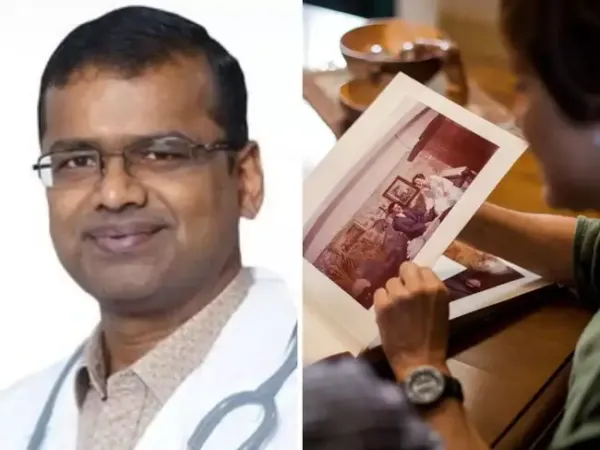Related
- CMC Vellore doctor cracks the case of a 15-year-old who suddenly couldn’t walk. Blood tests were normal, MRI was clear. What happened?
- CMC Vellore trained doctor shares 5 ways to manage type 2 diabetes beyond medicines
Love is often said to come from the heart, but science proves the real magic unfolds in the brain. Picture this: you stumble upon a photo of your partner while scrolling, and suddenly you feel calmer, lighter, maybe even happier. That spark isn’t just sentimentality—it’s your brain reacting in powerful ways. Neurologist Dr. Sudhir Kumar explains that advanced scans like fMRI and PET have shown how simply looking at a loved one’s photo can trigger remarkable changes in brain activity.
While Dr. Sudhir Kumar stresses that gazing at a loved one’s photo is not a cure for conditions like pain, anxiety, or depression, he notes that it works as a low-risk, evidence-based addition. Even a fleeting glance can calm stress, ease pain, and lift mood through the brain’s reward circuitry.
His reminder is simple yet powerful: human connection, even captured in a photograph, is medicine for the brain.
Brain's reward and motivation circuit
According to the CMC Vellore graduate, one of the first things that happens is the activation of the brain’s reward and motivation circuits. Dopamine—the brain’s “feel-good” chemical—floods areas like the ventral tegmental area, caudate, and nucleus accumbens, the very same circuits that respond to rewards and drive motivation. At the same time, stress and fear pathways in the amygdala calm down, leaving you with a sense of safety and ease.Less pain and improved mood
Dr. Sudhir Kumar also points out that the effect goes deeper than mood. Research shows that people often report less pain when looking at their partner’s face, and this isn’t just in their heads—brain imaging confirms that pain-processing regions quieten down. Along with easing discomfort, mood improves, and in some cases, people even experience a cognitive boost in tasks that call for empathy or emotional insight.While Dr. Sudhir Kumar stresses that gazing at a loved one’s photo is not a cure for conditions like pain, anxiety, or depression, he notes that it works as a low-risk, evidence-based addition. Even a fleeting glance can calm stress, ease pain, and lift mood through the brain’s reward circuitry.
His reminder is simple yet powerful: human connection, even captured in a photograph, is medicine for the brain.





